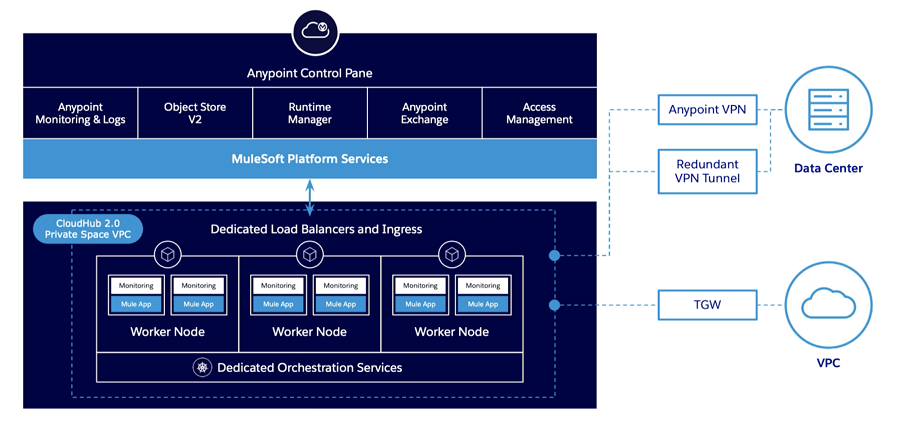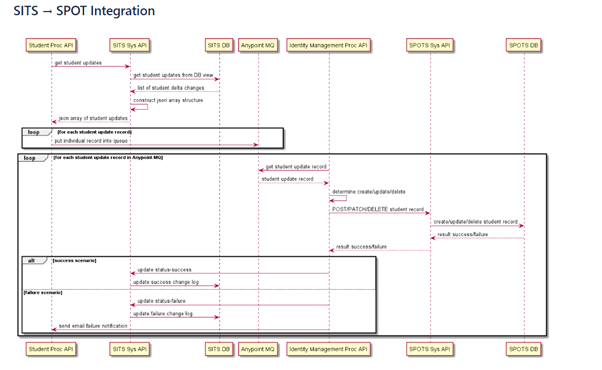Introduction
Integration paradigms are constantly adapting to shifting business needs and advancing technology. To tackle high complexity and the demand of today's data-driven environment, there are a few modern integration patterns. Check out several of the newest integration paradigms on the rise:
Event-driven architecture (EDA)
As a paradigm for connecting systems and services, EDA is becoming more and more popular. It emphasises how events and messages move across various system components, enabling loosely linked and asynchronous communication. EDA brings real-time processing, event-driven processes and reactive systems to new levels, enabling them to adapt to environmental change!
EDA provides a steady flow process, starting when events are created by producers. Next, they stream to a bus of events before they are consumed by event processors, who then carry out the required processing (such as altering data or initiating activities). Subscribers are able to respond to events by subscribing to the event stream..png?width=272&height=362&name=event_producer%20(1).png)
Microservices architecture
Microservices are small, autonomous and loosely linked services that are created, deployed and scaled separately. Each has its own job, focusing on a specific business function. They communicate with each other through messaging platforms or lightweight protocols such as REST, making it a smooth and organised exchange of information. In the world of microservices, coordinating and choreographing interactions between these independent services is a common integration practice.
In this architecture, clients communicate with the system using an API gateway. Requests are forwarded to the appropriate microservice, which can interact with others as necessary.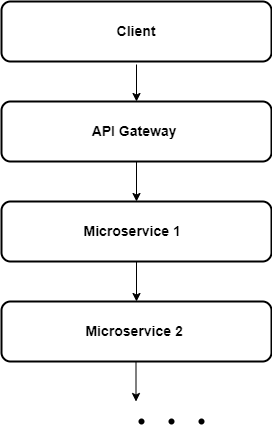
Hybrid integration platform (HIP)
A hybrid integration platform connects different integration strategies, including application-to-application, cloud and on-premises among others. Thanks to HIP's one platform, organisations are expertly able to link various systems and services to manage connections across many environments. It serves as a central center for organising and executing integrations across various settings, facilitating seamless data exchange.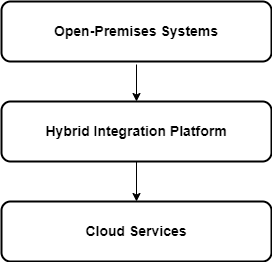
Serverless integration
Serverless computing is here! Now, developers can concentrate on developing code instead of worrying about infrastructure administration. These architectures enable developers to create event-driven workflows and build integration quickly. Platforms for integration offer serverless functionality, allowing the development of functions that react to events and triggers.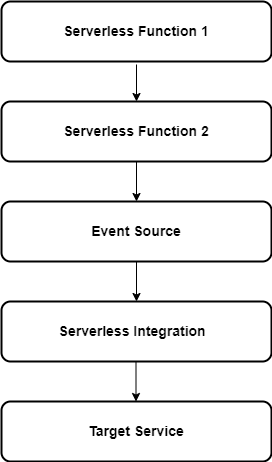
API-led connectivity
The usage of APIs (Application Programming Interfaces) as the foundational elements for integration is highlighted by API-led connection. It involves developing reusable APIs that expose particular business operations or data, making them available for consumption by other software or services.
API-led connectivity offers a modular and scalable approach to integration, building consistency in how businesses use services. Each API layer has a distinct function that enables scalability, reusability and agility. The pattern facilitates simple system integration and encourages a uniform user experience for clients using the APIs.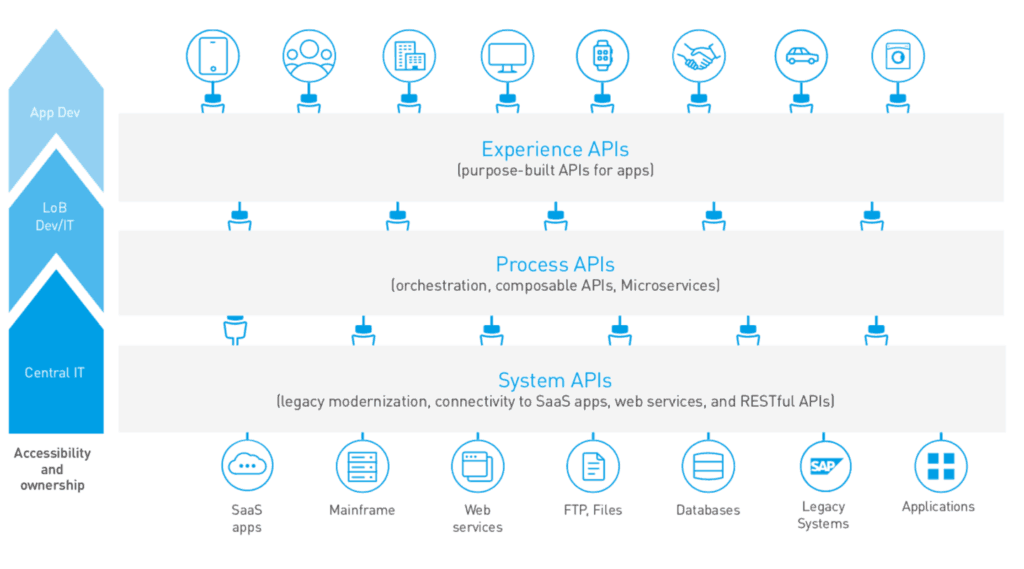
Data integration platforms
The emergence of big data and analytics has made data integration systems essential essential. They make combining and processing data from diverse sources effortless, allowing you to extract, convert, and load (ETL) data. Even more, they manage data quality, govern data and synchronize it between various systems and databases.
A data integration platform is made up of:
- Sources - Data is found in a variety of systems, databases, applications and external sources. Examples include file systems, cloud storage, web services and Internet of Things (IoT) devices.
- Platform - The platform itself connects the many sources of data and allows for the conversion of that data into a new format. It offers tools and capabilities to make data synchronisation, quality management, transformation and transportation easier.
- Warehouse - The combined data is frequently loaded into a Data Warehouse or a centralised reporting and analytical storage system. It serves as a centralised store for integrated and structured data that is available for usage by downstream applications, analytics platforms and business intelligence tools.
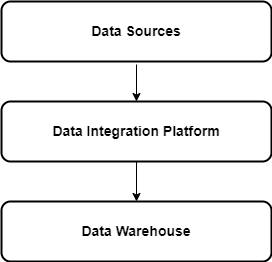
Internet of Things (IoT) integration
Everyone in tech knows the IoT world is developing at a rapid rate. Integration paradigms are changing to accommodate IoT-specific requirements as the number of linked devices and IoT applications increases. Using protocols like MQTT or CoAP, IoT integration connects, aggregates and integrates data across various IoT systems.
What are the various key elements involved?
- IoT devices/sensors - These are the actual hardware that gather environmental data or carry out specified functions. They could be any linked IoT ecosystem device.
- IoT gateway/edge device - Between devices and the integration platform, the IoT gateway serves as an essential middleman. It manages the data produced by IoT devices. The gateway can enable connectivity to the IoT devices in addition to edge analytics and local data processing.
- IoT integration platform - This platform serves as the core node of the IoT ecosystem. It handles everything from the ingestion to normalisation of data. The platforms are customisable to suit an organisations needs, allowing for the adoption of various features.
- Cloud services/applications - These provide an additional layer of processing and analytics to the integrated IoT data. A few examples are cloud-based analytics systems, AI/ML algorithms and visualization tools among many others!
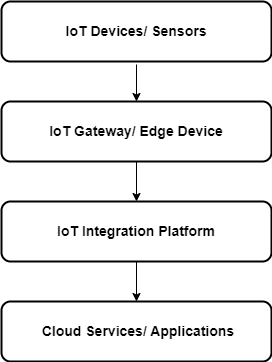
Other emerging integration patterns
I would be remiss to not also mention two of the newest exciting paradigms I’ve seen gaining traction in the industry:
AI-driven integration
It’s no secret that Artificial Intelligence (AI) has swiftly become a game-changer in the world in tech! AI technology usage is growing, and integration patterns are changing accordingly to take advantage. for more intelligent and automated integration procedures. AI-driven integration means more intelligent and automated procedures by applying machine learning techniques and algorithms. This is essential for organisations, who are now able to more efficiently manage complicated data integration scenarios.
Blockchain integration:
These days, building blockchain capabilities is a fast moving (and at times complicated) endeavor. Numerous corporate processes are incorporating this technology, so integration patterns are developing to make this process as fluid as possible. Connecting enterprise systems, applications and IoT devices with distributed ledgers enables secure and transparent data exchange as well as process automation.
Conclusion
As many patterns as I’ve shared, these only scratch the surface of the new integration paradigms that have recently emerged! The landscape is constantly changing to meet the demands of contemporary organisations as technology develops and new problems arise.
Leveraging the key insights I’ve shared above, you should now be equipped to get started and make informed decisions on your own integration journey!




